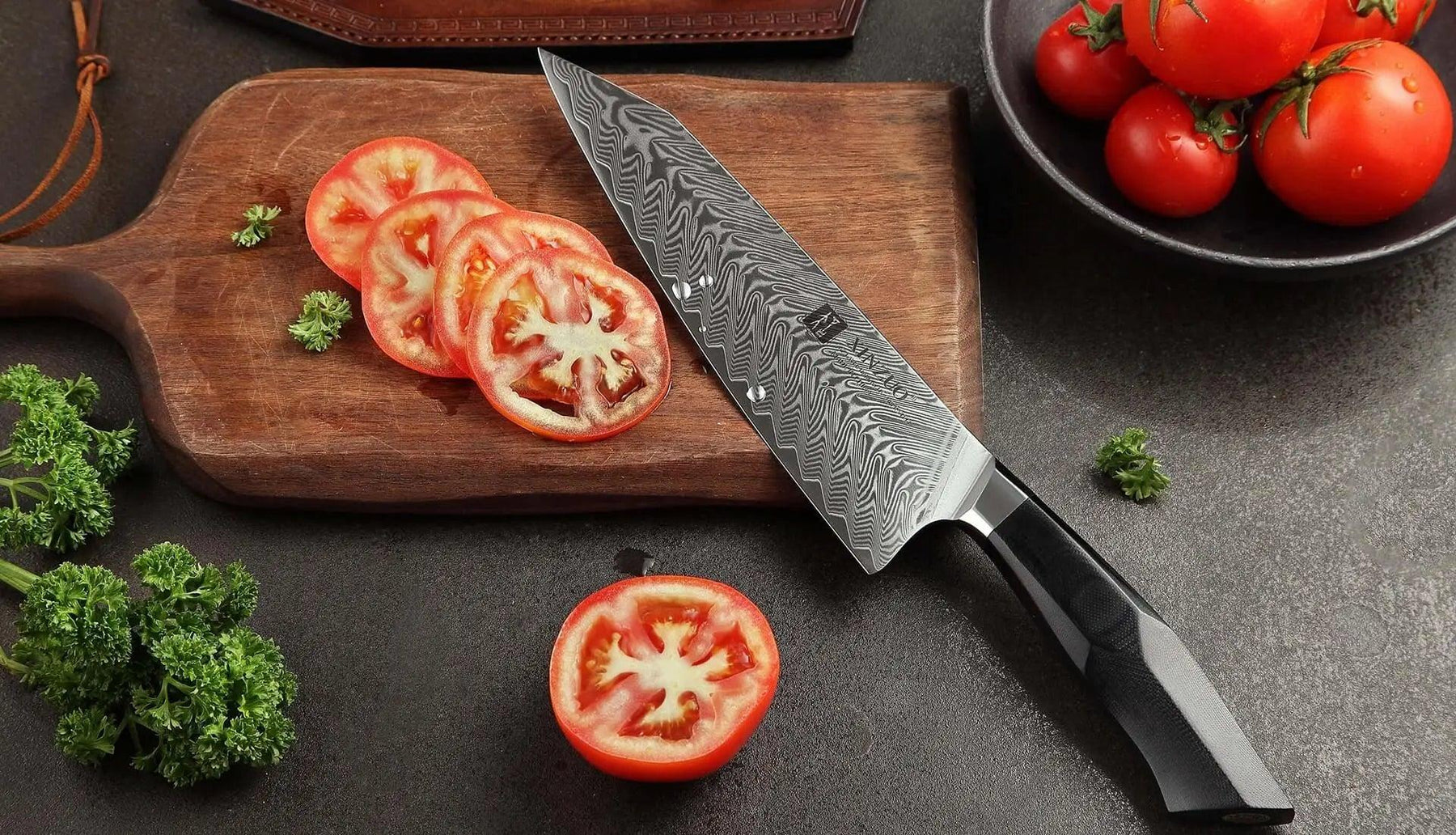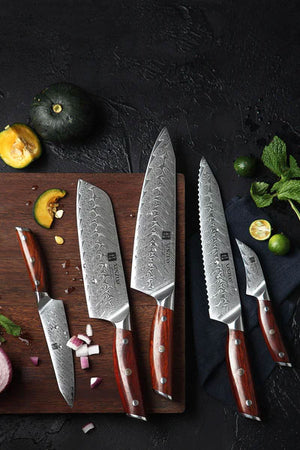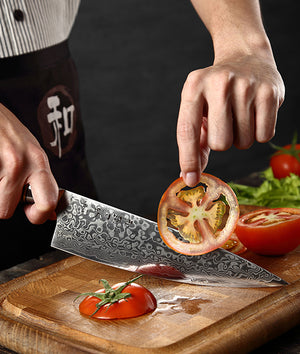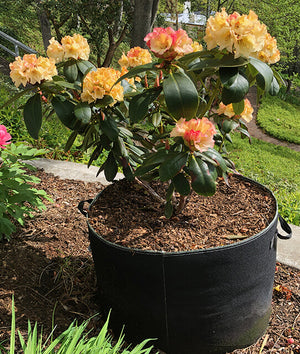
What is a Chef's Knife Used For?
For cooking to be enjoyable – and for you to be successful in your endeavors in the kitchen – the best thing you can do for yourself is make sure you have the right tools at your disposal. That's not to say that you need the most fancy knives in the business (although it doesn't hurt), but having high-quality equipment, or at least equipment that’s made for the appropriate purposes, is an absolute game changer.
This is true with pretty much everything in your kitchen – we're talking about pots, pans, cutting boards, and so much more. But most of all, and arguably most importantly, we're talking about knives. One of the best things you can do is invest in high-quality knives and make sure you look after them as best possible. If you do that, you're sure to have a far better time in the kitchen!
Now, there are lots of different options available to you, and it really all boils down to how many different knives you can afford to have. If you can invest in an extensive range of different knives, all suited for different purposes, that would be first prize. But if you can only have a few, like most of us, then it's even more important that you choose the right knives that'll allow you get everything done in the kitchen, and one of the best knives you could ever have is a chef knife.
A chef knife is a staple in most kitchens because not only are they incredibly versatile, but they're also able to withstand a massive variety of different food preparation tasks. They're big and heavy enough for some kinds of meat and larger vegetables, but they can also be used for finer things if you need.
We're going to tell you all about chef knives – what they are, what they look like, and what they're used for. After that we'll go on to explain exactly and the best ways to care for and chef knife so that you can get the best out of it.
What is a Chef's Knife?
A chef's knife is one of the most versatile kitchen tools – also making it one of the most popular – and it’s a big favorite among both professional chefs and amateur home cooks.
Designed for a variety of different tasks, a chef knife. tends to be most people's go-to in the kitchen, because you can use it for just about anything. They can be used for chopping, slicing, mincing, and dicing, and you can use a chef's knife with different types of meat as well as vegetables.
Not only is a chef knife suitable for a plethora of different types of foods (pretty much all types of food), but the other great thing about them is that they're suitable for loads of different cutting techniques. They're comfortable to hold and to use, and they're not particularly difficult to sharpen and look after.
But let's get into a little bit more detail about the construction of a chef's knife – that is, what it looks like – as well as exactly what it can be used for. And from there, we'll dive into some tips on how to properly sharpen and maintain your knife. Because once you know these things, you'll be able to confidently buy yourself the best chef knife
The Construction of a Chef's Knife
Commonly referred to as the "workhorse of the kitchen", the chef's knife is able to perform a myriad of tasks due mostly to its expert construction. The main components of the knife are the blade itself, the spine and the heel in particular, the handle, and the tang. Whether you're looking at Japanese chef knives or knives from elsewhere, these are things they'll all have in common.
The Blade
The blade is where the magic happens, and when it comes to chef's knives, they tend to be from high-carbon stainless steel, but some fancy, artisanal knives are forged from carbon steel. The choice of material is what ensures durability of the knife, as well as resistance to staining and corrosion, and a sharp edge that can be honed to a razor-like finish.
The blades of chef's knives tend to have a tapered design - that is, a broad, curved belly that extends into a sharp and thin edge and a pointed tip.
The curvature of the blade is what allows for the signature rocking motion that's normally used with this kind of knife while cutting – this is what makes it so ideal for chopping, dicing, and slicing such a broad range of different ingredients!
The Spine and Heel
The spine is the top part of the blade of a knife (the unsharpened bit), and as you move from the blade to the spine, you'll find that there's a gradual tapering off towards the tip. This tapering is there for two main reasons.
Firstly, it significantly reduces the weight of the knife – this makes it easier to control. Secondly, it allows the knife to be a lot more precise, meaning you can use it to make delicate cuts.
The heel is found at the base of the blade (the last bit before the handle), and the purpose of the heel is to provide stability and leverage. On a chef's knife, these things are very important, and the heel of a chef's knife is designed in such a way that it can be used for tasks that require some force if necessary.
The Handle
The handle of a chef's knife can be made from several different materials, and often, they're made of a mixture of things. The materials used to make handles tend to include wood, plastic, Resin, and other composite materials (e.g. fiberglass).
Many chef's knives (especially the more high-end products) feature ergonomically designed handles for the most comfort and to ensure that your grip is secure.
The Tang
The tang of a knife is the part of the blade that extends into the handle, and it's not normally visible. When it comes to the tang of a chef's knife, there are different types - some have a partial tang and others have full tang.
The former refers to tang that extends the full length and width of the handle, while the latter includes a tang that is only in part of the handle.
Most commonly, you'll find that chef's knives are full tang because this provides the most strength and durability.
What Does a Chef's Knife Look Like?
In case you're finding it difficult to imagine what the knife looks like with all of these separate features, don't worry, because it's actually quite distinctive. It has a long, narrow blade with a curved edge, and normally, the blade's width increases (gradually) from the tip to the base, so it has a broad belly. The spine tapers down to the tip.
Chef's knives normally range from about six to 12 inches in length – on average, eight inches is the most common size for both amateurs and professionals.
Normally, you'll find that a chef's knife's shiny steel blade stands in contrast to a wooden or synthetic handle, combining functionality and elegance.
This is especially true for the best Japanese chef knives - they boast exceptional aesthetics like Damascus blades.
What is a Chef's Knife Used For?
As we've said, a chef's knife is incredibly versatile, and when you've got the best of the best chef's knife, you can use it for just about anything. Here are some specific things that you can use a chef's knife for.
- Chopping: Chop veggies, herbs, meat, fruit.
- Slicing: Use a chef's knife to precisely slice all types of meat, including poultry and fish.
- Dicing: Dice anything you like, including onion, garlic or any other vegetable.
- Crushing Nuts or Spices: Use the flat side of the blade (the spine) to crush nuts, spices, or seeds.
- Transferring Ingredients: Use the wide blade of the knife to scoop up chopped ingredients.
- Slicing Through Tough Items: Chef's knives are strong enough to slice through tough-skinned fruits or vegetables.
- Mincing: Finely mince garlic, herbs, or other small ingredients using a rocking motion.
- Herb Stripping: Use the blunt spine of the knife to strip the leaves from stems quickly and easily.
- Julienning: Chef's knives are ideal for cutting ultra thin pieces of vegetables.
- Smashing Garlic: Use the flat side of the blade to smash cloves of garlic so that they're easier to peel before you mince or slice.
- Tenderizing Meat: Use the flat side of the knife to gently pound and tenderize meat.
- Deboning: If you don't have a boning knife, you can use a chef's knife for basic deboning such as trimming meat or breaking down a chicken.
How to Sharpen a Chef's Knife
The nice thing about chef's knives is that they're one of the easiest to sharpen using a whetstone. Use the general sharpening methods you would use for most ordinary knives, just adjust the angle of your blade - For western knives it should be at about 20 degrees for a chef's knife. This may vary depending on your knife, but 20 degrees is a good starting point. For most Asian knives 15 degrees is the sweet spot for most.
Start off with the whetstone coarse grit, as always, and then switch over to the fine grit to finish off. If you're not completely satisfied with the sharpness of your knife, you can repeat the process, or, you can use a honing rod to refine the edge of your chef's knife a bit more.
How to Look After and Maintain a Chef's Knife
Much like sharpening your knife, when it comes to maintaining and taking care of a chef’s knife, all of the general rules apply - whether it's a Japanese chef knife or any other type.
It's not a particularly delicate type of knife, but it still requires all the normal care.
- Don't put it in the washing machine - hand wash it!
- Never pack the knife in a drying rack or in a drawer if it's unprotected.
- Store it in a sheath or on a knife block, magnetic strip, or something similar.
- Dry your knife thoroughly with a soft, clean towel
- Avoid cutting on hard surfaces – select your cutting boards wisely
- Hone it regularly
- Sharpen it properly when necessary (but don't overdo it)
- Avoid using it on bone or frozen food
- Utilize proper chopping technique
- Don't twist the knife while cutting.
- Take care of the handle
- Inspect it regularly to make sure it's in good condition



